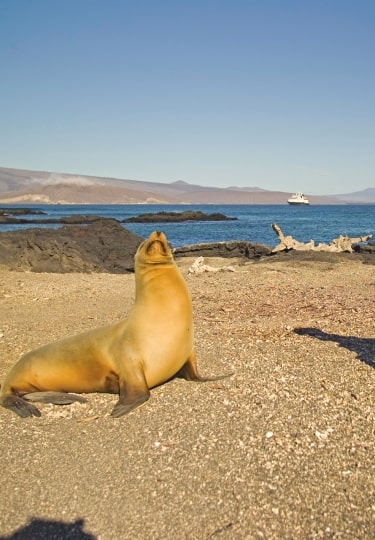How to Plan a Galapagos Islands Vacation
Visiting the Galapagos Islands is a trip of a lifetime and an experience you’ll never forget. But where should you go? And when? What should you pack? And more to the point, what should you expect?
Here are eight steps to plan your perfect Galapagos Islands vacation.
Consider What Wildlife You’d Like to See
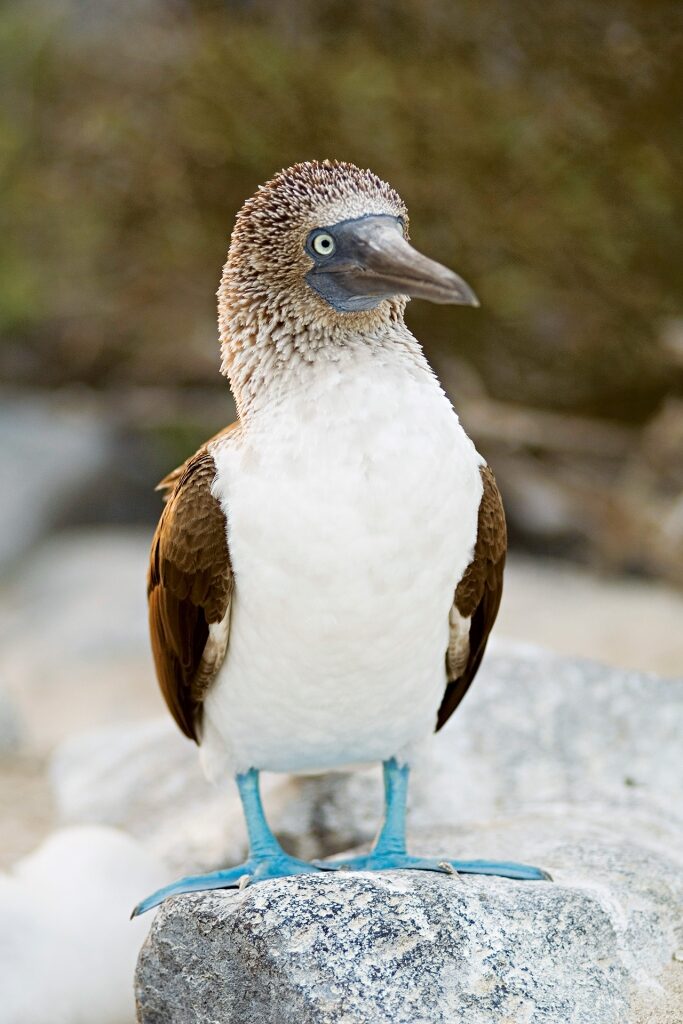
Blue-footed booby
To most visitors, the most astonishing aspect of the Galapagos is the wildlife. Because the archipelago, 500 miles off the coast of Ecuador, has remained isolated for millions of years, the creatures that live there have evolved with no fear of humans. To this day, only five of the islands have human populations.
You’ll find yourself stopping on hiking trails to let iguanas amble across and stepping around sea lion moms with pups on the beaches. Penguins will bob around you, and turtles will glide beneath as you snorkel in the Galapagos. Mockingbirds will land on your shoulder.
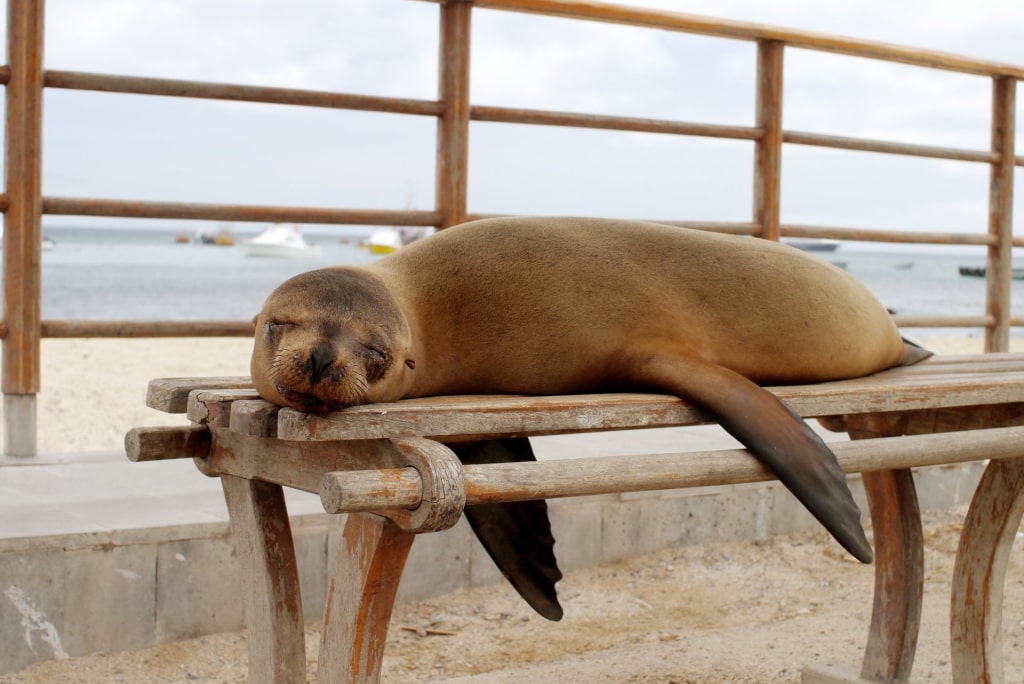
Puerto Ayora
Even in towns like Puerto Ayora, sea lions snooze in the shade on wooden benches or join pelicans in helping themselves from the fishermen’s market stalls. Iguanas bask on walls and sidewalks. This is their world, and you are just a visitor.
So what can you expect to see when you visit the Galapagos Islands? Some species are common to most islands. Land and marine iguanas, sea lions, frigatebirds, pelicans, boobies (red-footed, blue-footed, and Nazca), lava lizards, and bright orange Sally Lightfoot crabs are everywhere. Many species, not least the iguanas and lava lizards, are found only in these islands.
What intrigued Charles Darwin when he arrived on HMS Beagle in September 1835 was that while the creatures were similar on each island, there were subtle differences. The shapes of the beaks of the finches on different islands suggested that these Galapagos birds had evolved to adapt to the available food. This idea led Darwin to develop his theory on natural selection and the adaptability of species to their environment.
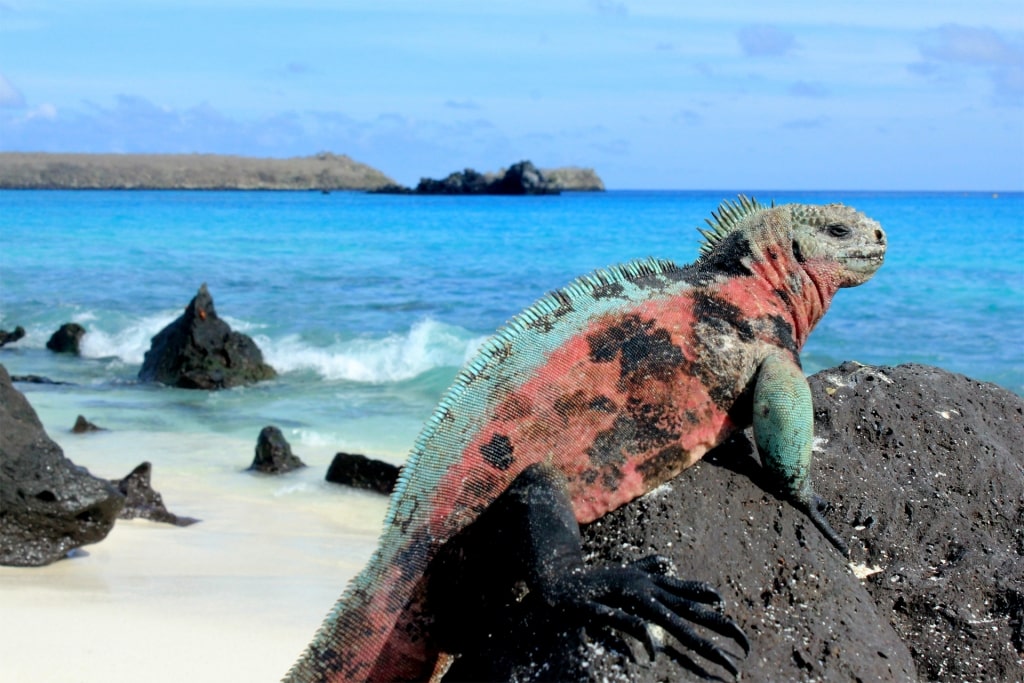
Marine iguana
So prepare to make your own Darwinian observations. You might note that the marine iguanas are more colorful on Española than elsewhere, and the seven species of lava lizard, which are thought to have evolved from one, are different sizes and shades according to the island they live on.
The riches under the water are just as astonishing as on land, so prepare to get wet, even if you’re a novice snorkeler. The brilliant colors of the fish aside, playful sea lions will zip around you as you swim, while marine iguanas, curiously graceful under the water, dive down to feed. In the deeper water, black-tipped sharks cruise the seafloor, while on the sand flats, buried stingrays shake themselves off and dart across the sand.
Read: Unique Things to Do in the Galapagos Islands
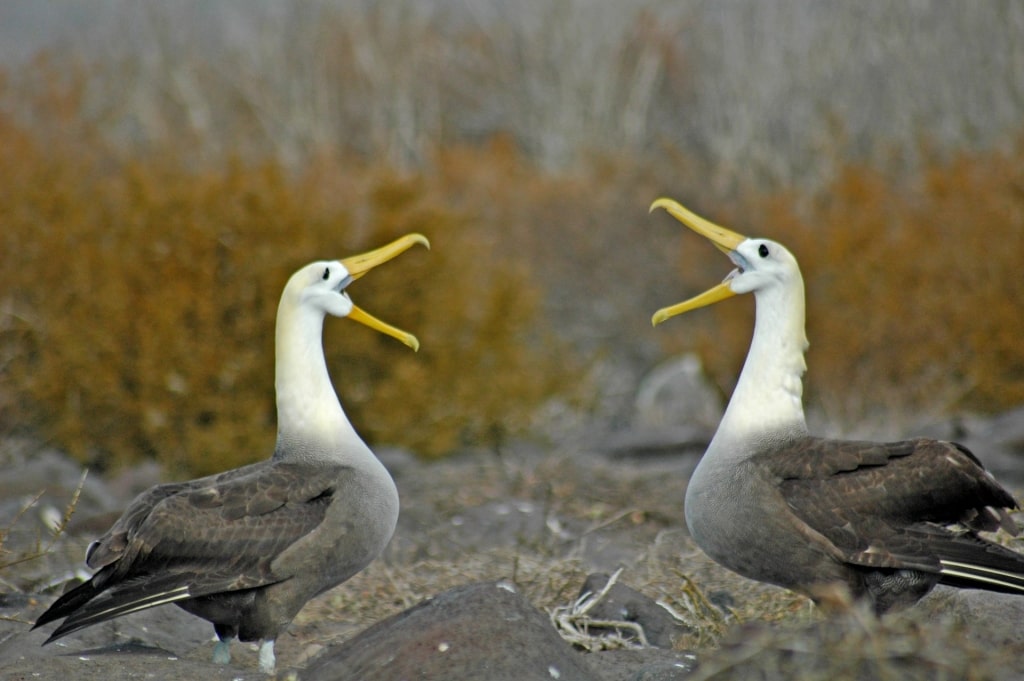
Waved albatross
A few species are limited to a couple of islands. Española is the only island where you’ll see the waved albatross, for example, at Punta Suarez, and then only in nesting season. The highlands of Santa Cruz are the best place to spot the curiously charismatic giant tortoises.
The reality, though, is that unless you’re a birding expert with very specific ambitions, in which case you’ll no doubt do your own research, you’ll check off your Galapagos wildlife bucket list on any itinerary.
Choose Your Route
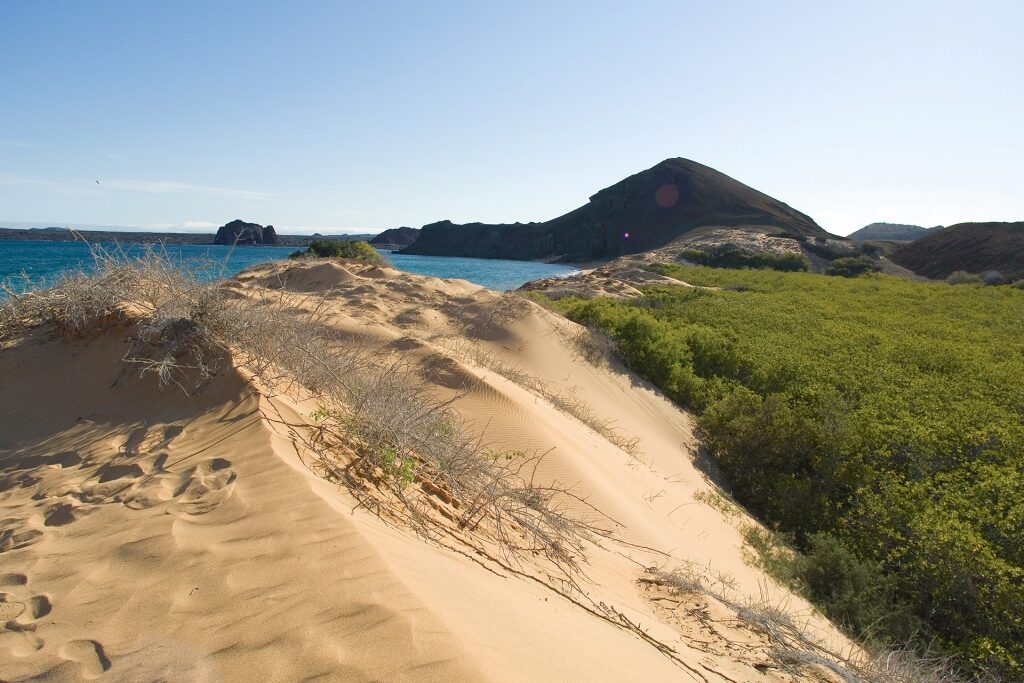
Galapagos
All 18 of the main islands of the Galapagos are volcanic, but they’ve formed over millions of years, so all look different. You’ll see high cliffs, sea caves, tumbled rocks, and jagged lava fields. Some islands are dry, studded with candelabra cacti, while others support rich mangrove ecosystems. Beaches come in shades of green (when there’s olivine in the rock), pink, sparkling black, and powdery white.
The authorities of the Galapagos National Park determine where ships can go and how long they can stay, and each ship generally follows the same selection of itineraries, whether it’s outer loop, inner loop, northern loop, or southern loop, calling at between 12 and 14 anchorages and islands over seven days.
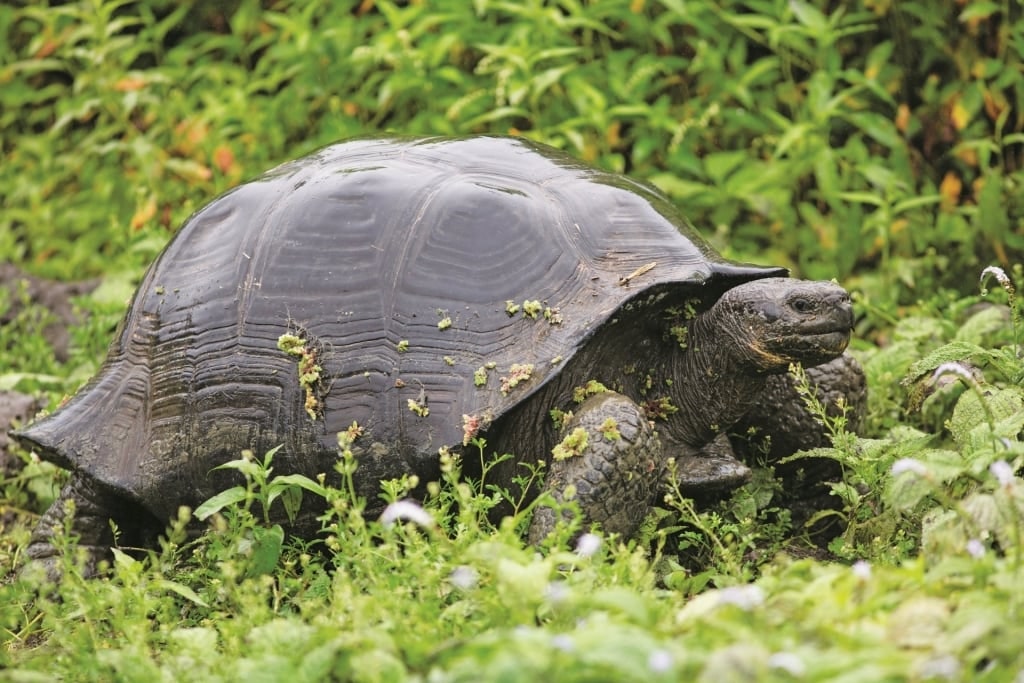
Galapagos tortoise
All itineraries start in Baltra, where you don’t spend any time; it’s straight from the airport to the dock and onto the Zodiac, the ship’s inflatable tenders, known locally as pangas. All itineraries spend a day in Puerto Ayora, where you’ll have a chance to visit the Charles Darwin Research Station, which has a giant tortoise captive breeding program, before heading into the highlands to see tortoises in the wild.
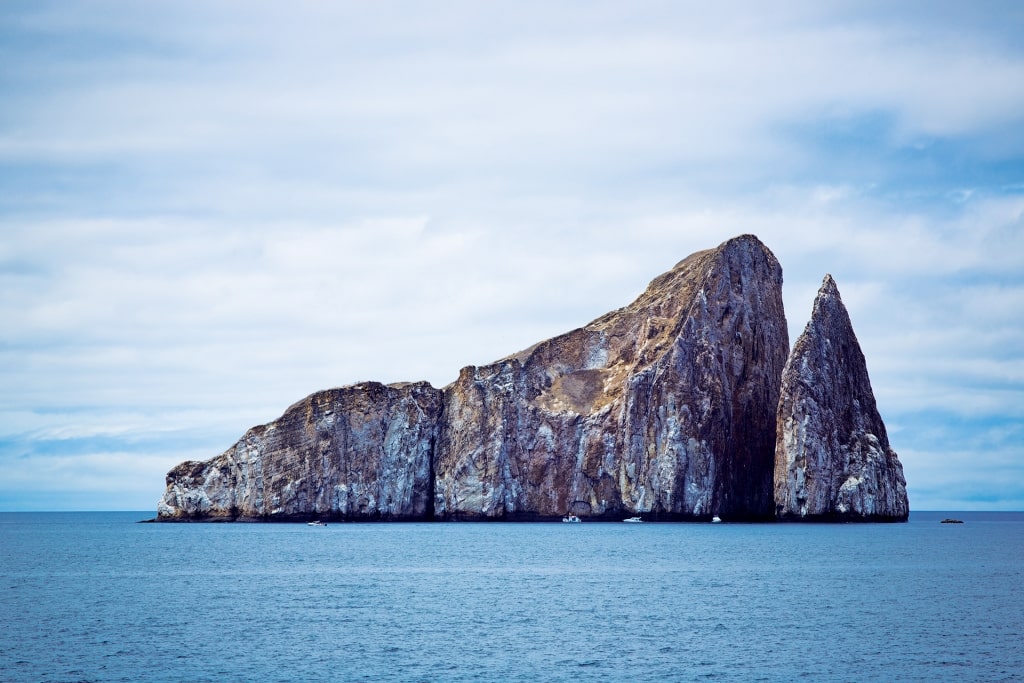
Kicker Rock
That said, there is no “best” route. Pick an itinerary including San Cristobal Island if you want that iconic shot of the sun setting behind the 460-foot volcanic spike of Kicker Rock, and the sight of thousands of blue-footed boobies. Tiny Bartolomé, the tip of a volcano, has the best views of neighboring islands from the 374-foot summit, if you’re prepared to tackle the 300 wooden steps.
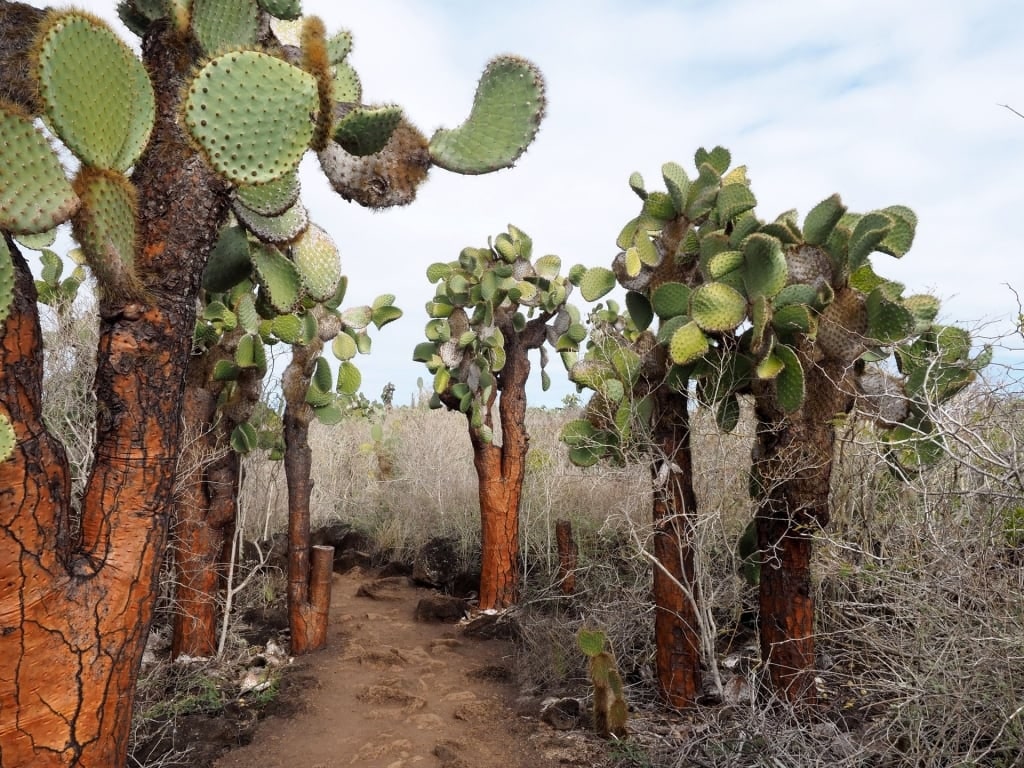
North Seymour
North Seymour has a huge colony of pterodactyl-like frigate birds, while on Santa Fé, you’ll hike a trail lined with cacti, past groups of iguanas munching on the spiky leaves, with large colonies of sea lions strewn across the beach. Floreana, with its red mangroves and brackish lagoons, is the place to spot pink flamingoes.
But unless you’ve got your heart set on one particular island, or a sighting of one particular species—and this is nature, remember, with no guarantees—it’s better to see the Galapagos as a whole. All Galapagos cruise loops are wonderful, and if you can’t decide, then book back-to-back voyages and do two!
Plan When to Go
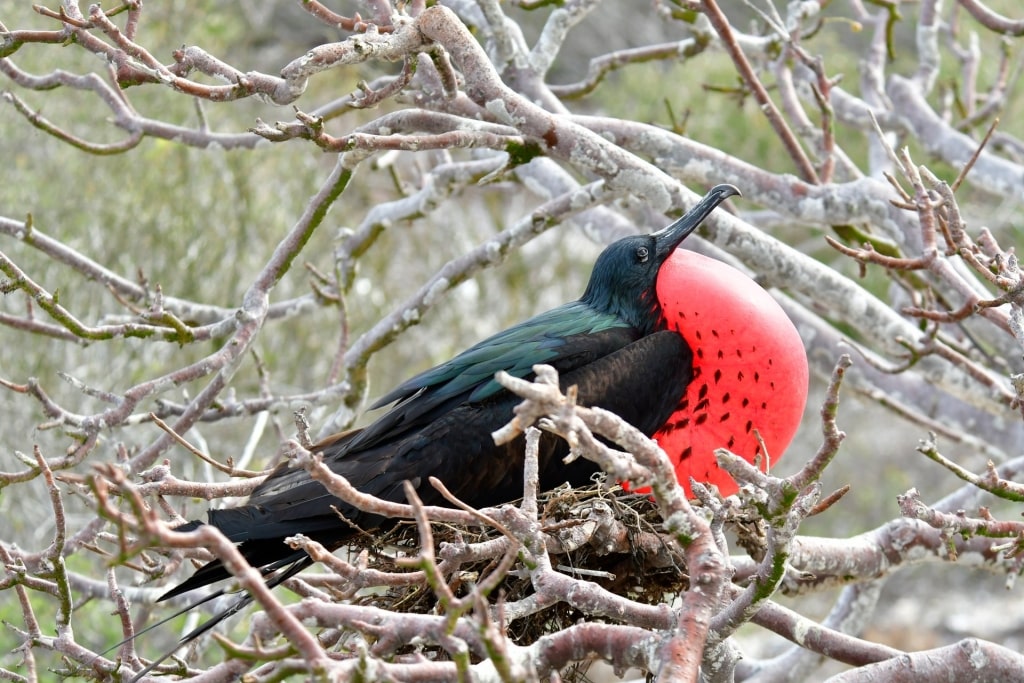
Frigate bird
The Galapagos Islands straddle the equator, so the climate doesn’t vary greatly, but you will see different animals and behaviors at different times of year. December to April/May is the wet season, when you’ll get warm temperatures but more rain. May to November is drier and slightly cooler.
In January, you could see green sea turtles laying their eggs. February, March, and April bring spring flowers and breeding season; look out for blue-footed boobies performing their curious courtship dance. In April and May, sea turtles and giant tortoises hatch, while male frigatebirds puff out their scarlet chest pouches to attract a mate.
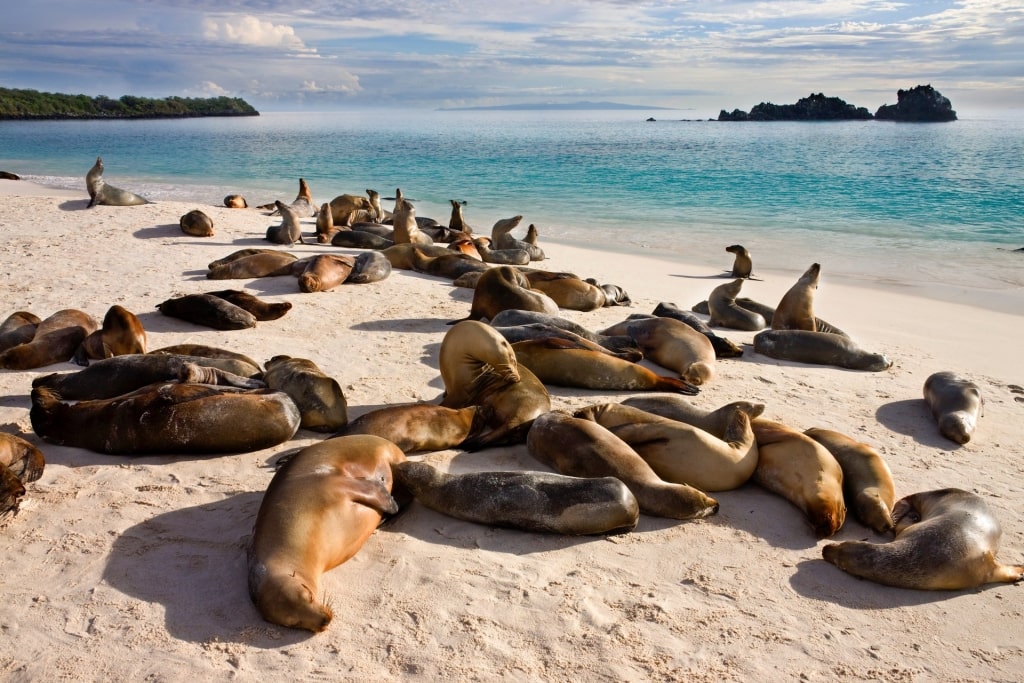
Galapagos sea lion
Plankton and nutrients are richer in the sea in the cooler months. In June, dolphins may be spotted around Isabela and Fernandina, and humpback whales migrate through the islands, so this is the best time to visit the Galapagos if you want to do some whale-watching. From August onwards, sea lions give birth to cute, big-eyed pups. In December, the graceful waved albatrosses leave Española, not returning until March.
Think About Extending Your Stay
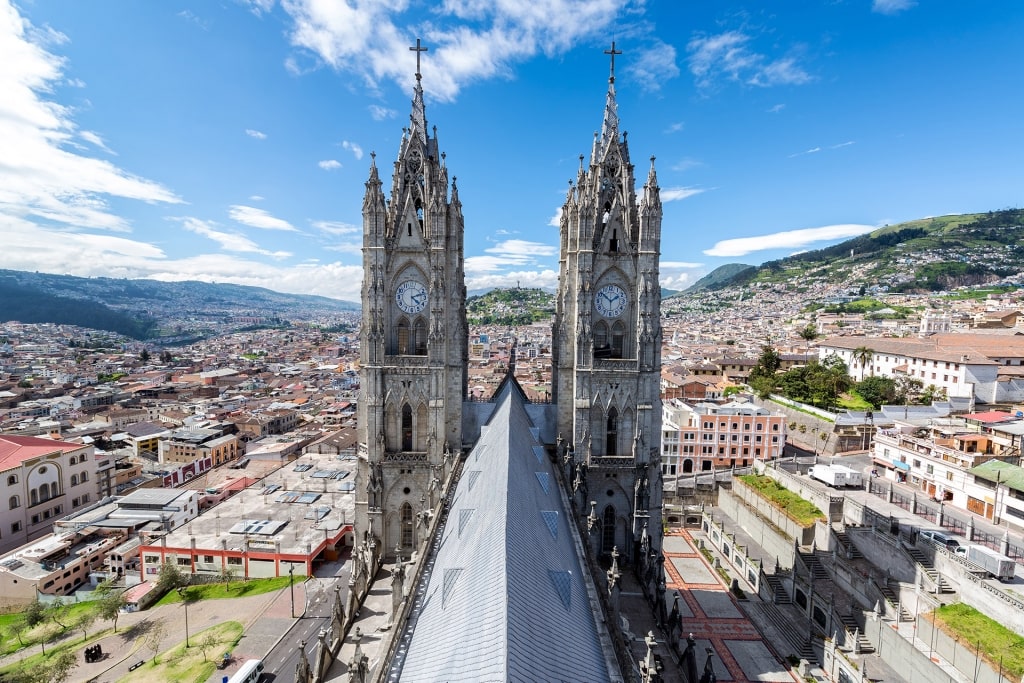
Quito, Ecuador
On a Galapagos Islands vacation, there’s ample opportunity to add on other highlights of South America. Quito, Ecuador’s capital, is fascinating, a long, skinny city strung along a high valley at 9,350 feet, the wonderful old colonial monuments of its 17th-century center preserved as a UNESCO World Heritage Site. On clear days, the snowy peak of the Cotopaxi volcano dominates the horizon.
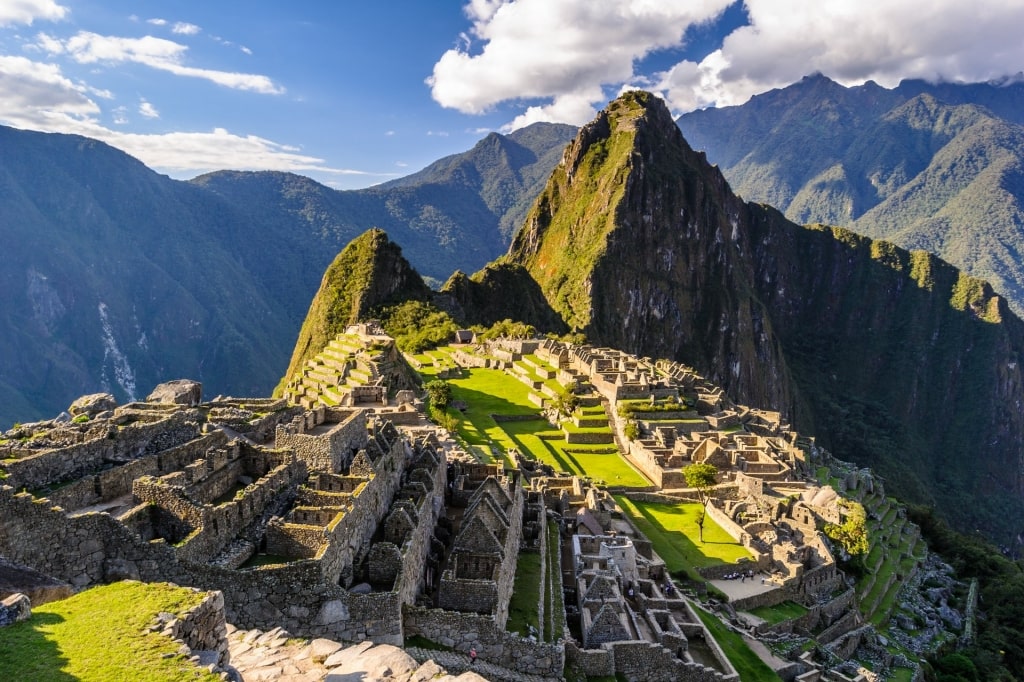
Machu Picchu, Peru
Alternatively, you could fly from Quito to Lima, the colorful capital of Peru, to explore what’s arguably South America’s most vibrant culinary scene. Then head to Cuzco, high in the Andes, to acclimatize for the Sacred Valley and the incredible sight of Machu Picchu, the mist-shrouded Incan citadel that’s one of the world’s most iconic sights.
Make Sure the Galapagos is for You
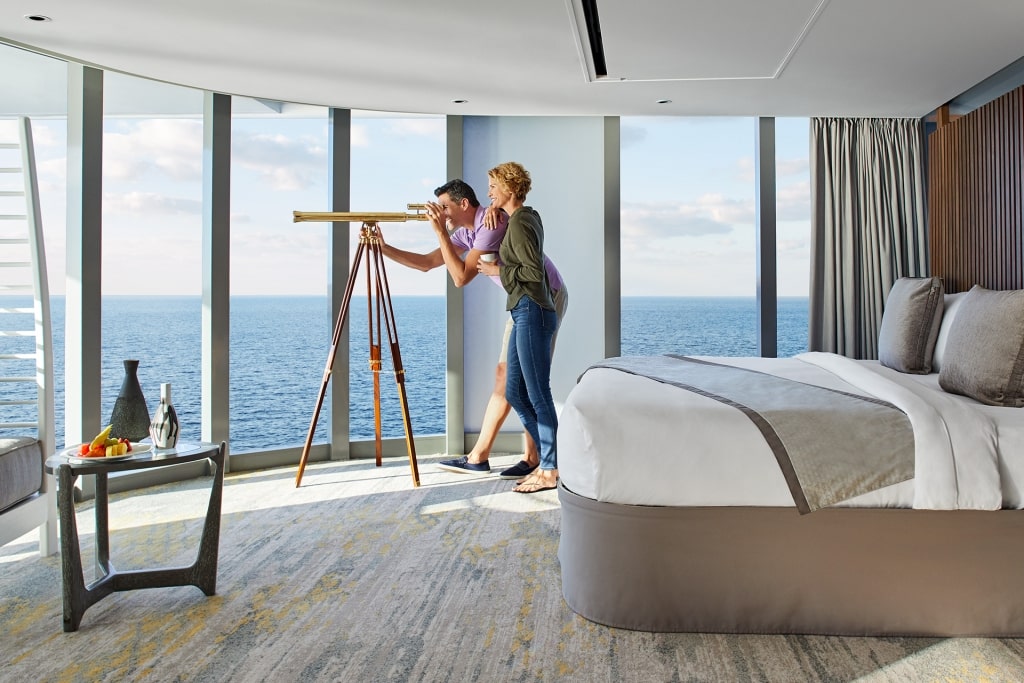
Celebrity Flora Suite
Anybody who loves wildlife, the raw beauty of nature, and an active vacation—some of the many reasons why the Galapagos Islands are important—will be profoundly moved by the island. The islands are great for families—what better education could you want for kids? The archipelago is undeniably romantic, especially if your base is one of the exquisite suites on Celebrity Flora. And if you’re single, there’s no better vacation on which to find new friends, as the whole voyage is such a bonding experience.
While this is an active vacation, travelers with limited mobility can still enjoy the Galapagos, too. You should be able to climb on and off a panga (the crew will always help) and be prepared for wet landings, when you slide off into the water and walk ashore. Again, assistance is always on hand. But if you can’t hike, you could sit on the rocks or the sand and commune with sea lions and iguanas.
If you’re not a strong swimmer, there are gentle snorkel excursions, and you could wear a buoyancy aid in the water. If you stay on board, you might be joined by the occasional curious pelican, while frigate birds wheel overhead and black-tipped sharks sometimes circle the ship. Some of the excursions are panga safaris, where you might see mangroves, golden rays, Galapagos penguins, and the inevitable iguanas from the boat. Wheelchair accessibility on the islands, though, is extremely limited.
There’s no denying that a Galapagos Islands vacation is pretty active. You’ll be up early, ashore or in the water after breakfast, and then on a second activity or excursion after a siesta. Then it’s back to the ship for lectures, briefings, cocktails, dinner, stargazing, and deep sleep, for most. While you could in theory just sunbathe on deck or sit on a beach, you’d miss out on the extraordinary wildlife and scenery.
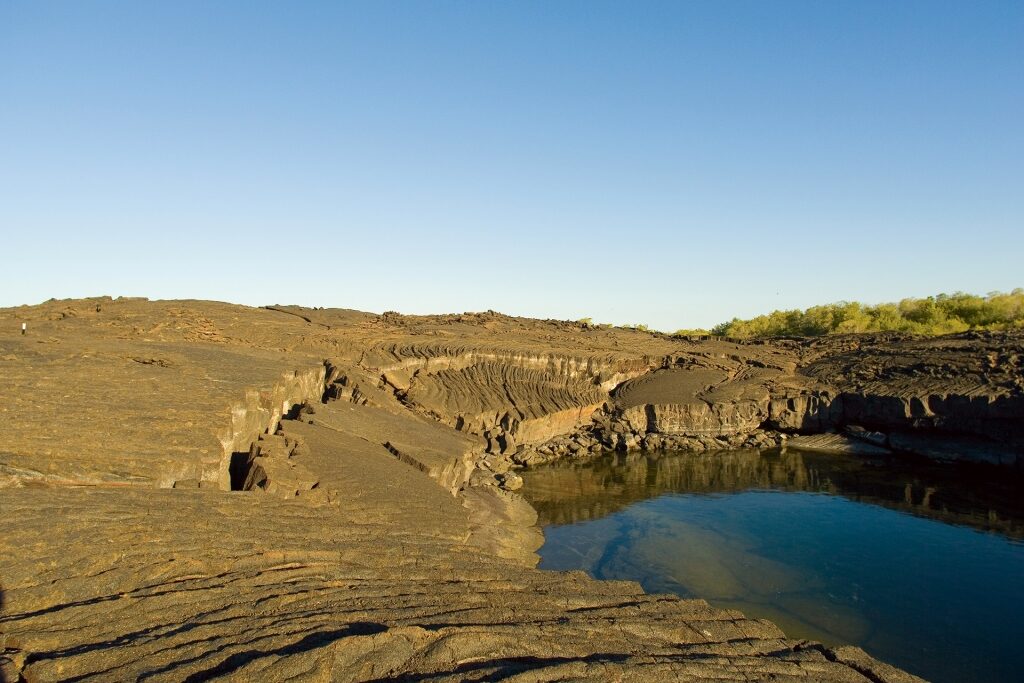
Galapagos
The Galapagos landscape is not generally lush, it’s harsh—volcanic and spiky, although starkly beautiful, with pristine beaches and hardy vegetation, adapted to living on lava. Don’t expect waving coconut palms and purple bougainvillea.
Cellphone signal in the islands can be sketchy, and many see this as a time for a digital detox. A typical itinerary gives you just one day in a town, Puerto Ayora, for shopping, cafés, and catching up on emails.
Read: The Ultimate Guide to Visiting the Galapagos With Kids
Time to Pack!
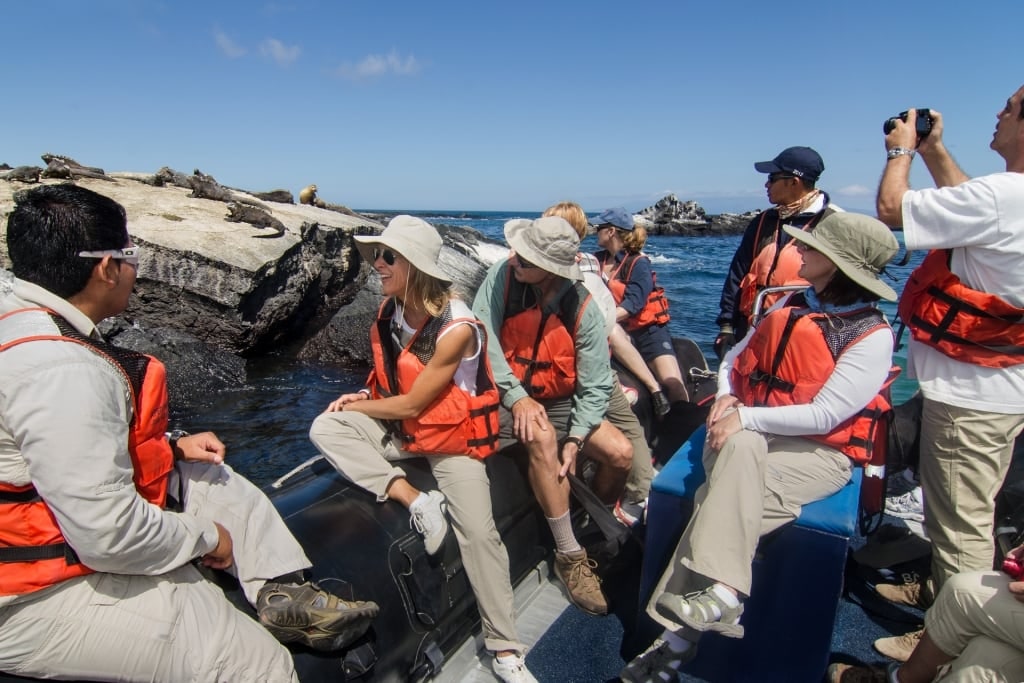
Excursion
Retail opportunities in the islands are few and far between, so make sure you have everything you need on your Galapagos packing list. First, sunblock; this is the Equator, and the sun is powerful. A wide-brimmed hat that won’t blow away is essential. Bring clothes in breathable fabrics and neutral colors, with sleeves to avoid sunburn. Why neutral colors? They’re less likely to be mistaken by insects as flowers.
You’ll be going ashore by panga, so be ready for wet landings. Water sandals that are good for mild hiking are perfect. Some of the hikes are on rocky trails, so supportive shoes or lightweight walking boots are good for these, provided you don’t mind jumping off the tender barefoot and drying your feet.
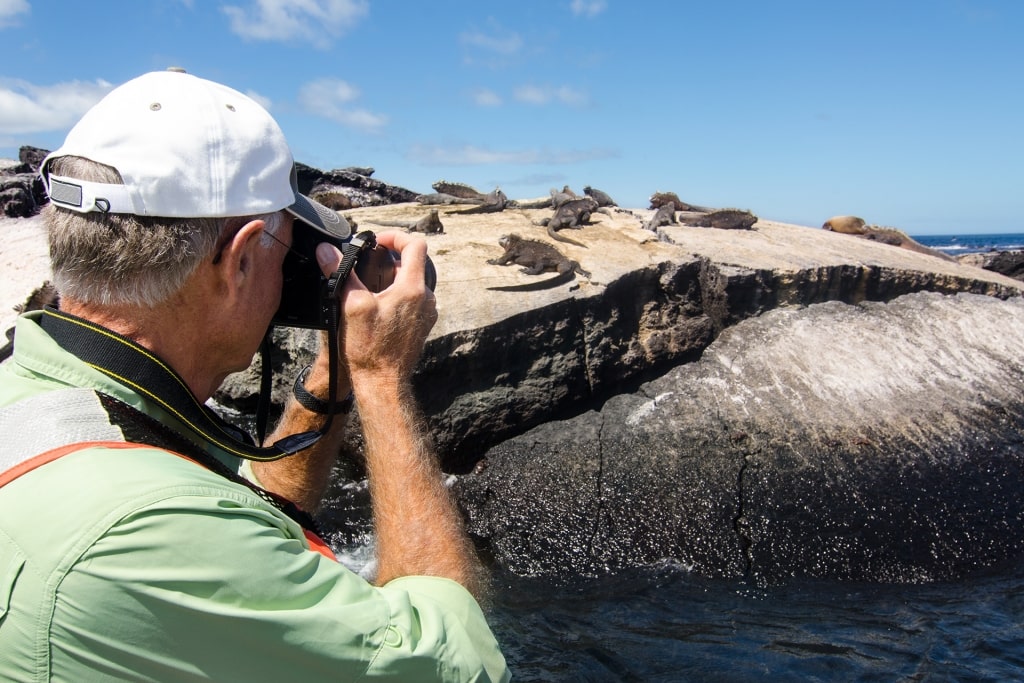
Galapagos
Binoculars are offered on board, as is snorkel gear, wetsuits, and walking poles, as well as a wealth of literature about the islands. You’ll want to bring a camera, ideally with a zoom lens. A GoPro is great for underwater shots. Don’t pack a drone, as they’re not allowed in the islands. A memory stick is a good idea as guests and guides often share images of the trip.
Bring a wet bag to transport equipment ashore and a waterproof cover for your cellphone. Consider investing in a prescription dive mask if you don’t wear contacts. A rash vest is great, too, as it will dry quickly and protect you from the sun. A day pack is ideal for hikes.
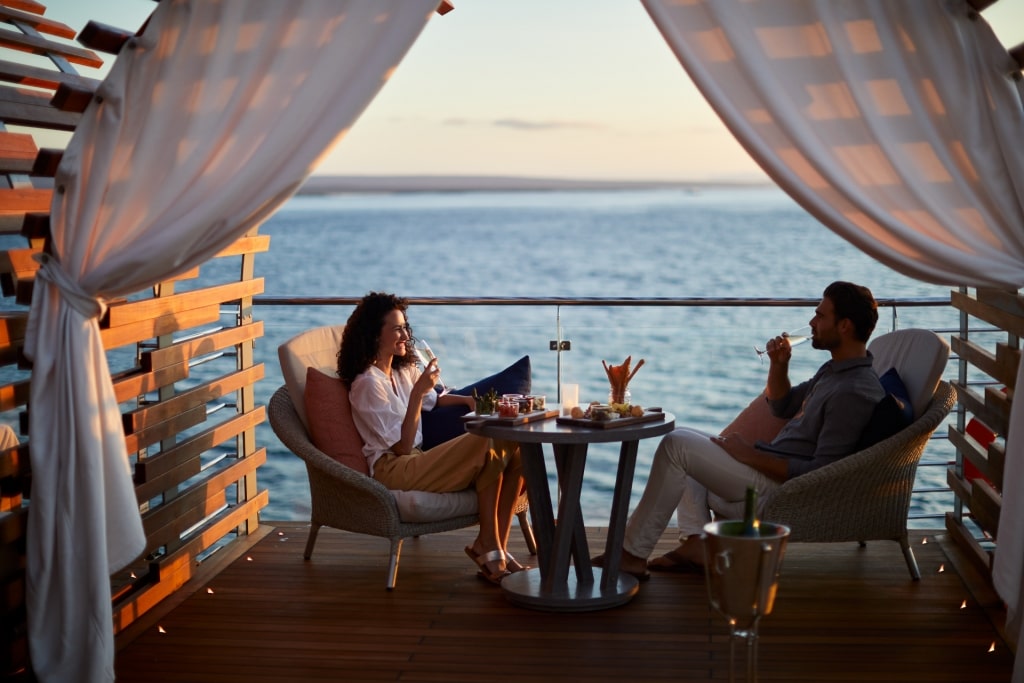
Celebrity Flora
If you’re planning on spending time in Quito before your voyage, bring layers, as it can be cool at altitude. Finally, evenings on a Galapagos Islands vacation are casual, so leave the ballgown and tux at home!
Prepare Yourself for a Life-Changing Experience

Hiking
Visiting the Galapagos Islands affects people in different ways, but for many, it changes everything. This is a life-affirming experience. Once you’ve witnessed nature in the raw like this, and walked and swum with creatures that regard themselves as your equal, your view of your place on this planet shifts slightly. The desire to protect this incredible place becomes real. Visiting the Galapagos is an incredible privilege, and once you’ve been, you’ll always be an ambassador.
Ready to plan the perfect Galapagos Islands vacation? Visit our website to browse itineraries and book your incredible adventure today.
